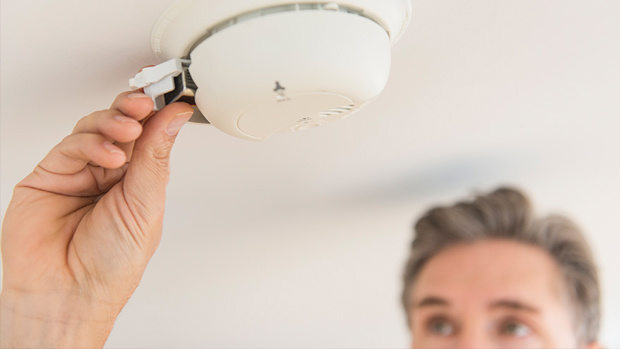Consumer NZ calls for this smoke alarm to be pulled from shelves
- Publish Date
- Thursday, 17 May 2018, 11:42AM

Photo / Getty Images
Ionisation-type smoke alarms performed so "poorly" in tests watchdog Consumer NZ is calling for them to be pulled from shelves.
While all smoke alarms would respond to a fire eventually, the difference was in responding to visible smoke, Consumer NZ head of testing Dr Paul Smith said.
"A smouldering fire can fill a home with deadly smoke long before it bursts into flames."
Ionisation alarms gave much less warning of smouldering fires than photoelectric alarms, the consumer watchdog's tests found.
You can identify an ionisation-type smoke alarm because it will have a radioactive symbol somewhere on the alarm body – it may be underneath, so you might need to remove it to check, Consumer NZ says.
Smouldering flames include those caused by faulty electrical wiring, curtains draped over a heater, or a hot ember igniting upholstery foam, making it less likely for people to be able to get out of their homes safely.
The tests showed ionisation models were great at detecting flames, but not so good with visible smoke.
"The four ionisation alarms in our test were faster at detecting flaming fires (burning oil and wood) but much slower at detecting smoke from smouldering foam," Smith said.
He said people should purchase photoelectric alarms instead. These were also recommended by the New Zealand Fire Service, and the Residential Tenancies Act required all new alarms landlords installed to be photoelectric with a long-life battery.
"We think ionisation alarms should not be sold and are working with retailers to remove them from their shelves," Smith said.
People could identify an ionisation alarm from a radioactive symbol on the alarm body.
Consumer NZ advised people not to remove working ionisation alarms, but to also fit photoelectric models at least in hallways and escape routes.
Landlords should ensure all new smoke alarms were photoelectric models with a long-life battery.
Tenants should not remove smoke alarms, and were responsible for replacing dead batteries.
The Fire and Emergency service said having any smoke alarm was better than having none.
"People may choose to keep their ionisation smoke alarms until the end of their service life at 10 years," said Fire and Emergency's national adviser on fire risk management, Peter Gallagher.
"We do not believe that ionisation alarms are unsafe, as any working smoke alarms will provide some degree of early warning."
However, he said photoelectric alarms were generally considered to be the more effective type, across the range of fires that occur in homes.
Gallagher said firefighters had for more than a decade recommended the use of long-life photoelectric alarms.
"We believe people's best protection is to have working long-life photoelectric smoke alarms in every bedroom, living area and hallway in their home.
"These long-life alarms provide up to 10 years of smoke detection, remove the frustration of fixing the flat-battery beep, mean people don't have to climb ladders every year to replace batteries and are the preferred option."
NZ Herald
Take your Radio, Podcasts and Music with you

